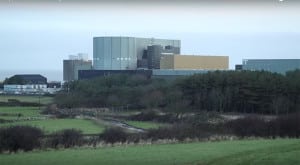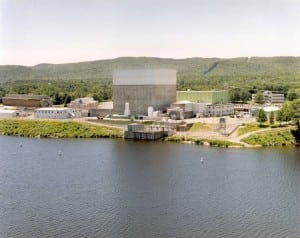nuclear power
-
Press Releases
First Westinghouse AP1000® Completes Cold Hydro Test at Sanmen 1
BEIJING–(BUSINESS WIRE)–The world’s first AP1000® nuclear power plant moved a step closer to commissioning with the completion of the cold hydrostatic test (CHT) at Sanmen Unit 1 in Zhejiang Province, China. The successful completion of CHT confirms that the reactor systems meet design pressures under operating and accident conditions and signifies the completion of the […]
-
Nuclear
Watts Bar Unit 2 Reactor Goes Critical (and That’s a Good Thing)
The Tennessee Valley Authority’s (TVA’s) newest nuclear plant, Watts Bar Unit 2, achieved initial criticality on May 23 at 2:16 a.m. Although that may sound ominous to anyone untrained in nuclear terminology, initial criticality simply means that Watts Bar Unit 2 reached a state in which the reactor’s neutron population remained steady from one generation […]
-
Nuclear
Moniz: Incentives Needed to Alleviate Nuclear Power Woes
U.S. Secretary of Energy Ernest Moniz said the time will come—perhaps 10 to 15 years from now—when “nuclear power is going to have to see a substantial resurgence.” Moniz was speaking on May 19 at the “Summit on Improving the Economics of America’s Nuclear Power Plants.” He provided opening remarks, framing the challenges facing the […]
-
Press Releases
Westinghouse Contracts with Finland’s TVO to Deliver New Reactor Components
VÄSTERÅS, Sweden–(BUSINESS WIRE)–Westinghouse Electric Company today announced that it has signed a contract with Teollisuuden Voima Oy (TVO) in Finland to deliver new feedwater spargers to the Olkiluoto Nuclear Power Plant (NPP) Units 1 and 2. The scope of the contract is for designing, analyzing, manufacturing and installing eight feedwater spargers. Feedwater spargers distribute water […]
-
Nuclear
Nuclear Milestones Confront Exelon, FPL, and TVA
Five nuclear projects—two old, one new, two planned—faced milestones this week as their owners confronted the realities of the U.S. nuclear market. Exelon Seeks Nuclear Support In Illinois, Exelon again warned that the long-challenged Clinton and Quad Cities plants would shut down unless the Illinois legislature passed a bill that would provide economic support for the […]
-
Press Releases
New Vogtle timeline video showcases first-quarter progress at nuclear expansion
Georgia Power has released the latest timeline video from the Plant Vogtle nuclear expansion showcasing construction progress in the first quarter of 2016. Now more than 60 percent complete based on contractual milestones, progress is visible every day. The Vogtle project is the state’s largest job-producing construction project with more than 5,000 construction workers onsite and […]
-
Legal & Regulatory
Is Nuclear Energy “Toast”?
“My sense as I speak to you here today is that nuclear energy is toast,” said New York Times Reporter Eduardo Porter, as he opened a panel discussion titled “Nuclear Energy and the Clean Energy Future” held at the New York University School of Law on March 23. “Despite the challenge from climate change that […]
-
Nuclear
Transforming Information Technology at the South Texas Project Nuclear Plant
In today’s world, it’s hard to operate a power plant without the benefit of information technology (IT) systems. Staff tasked with managing these systems can take a beating when the tools don’t work as advertised. Here’s how one IT department focused on building and sustaining cross-functional relationships, culminating in a win-win for the department and […]
-
Nuclear
World’s Last Magnox Nuclear Reactor Shuts Down for Final Time
The Wylfa Nuclear Power Station—the last operating Magnox reactor in the world—came offline permanently on Dec. 30. Located in Anglesey, an island off the northwest coast of Wales in the UK, the plant entered service in 1971. Originally constructed with two 490-MW units, only Reactor 1 has been operating since 2012. The UK pioneered the […]
-
Legal & Regulatory
Cheap Gas Is Killing Nuclear Power, and the Outlook is Grim
Another month, another premature nuclear plant retirement. About two weeks ago, Entergy finally threw in the towel on the James A. FitzPatrick Nuclear Power Plant in Scriba, N.Y., a move that came as a surprise to exactly no one who has been paying attention to the merchant nuclear business in the U.S. the past few […]








